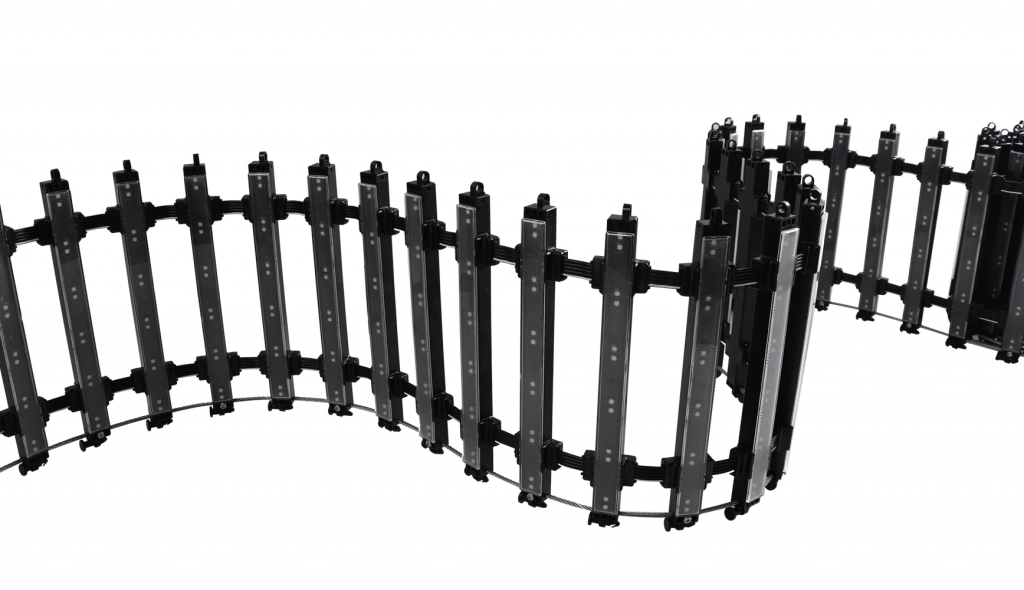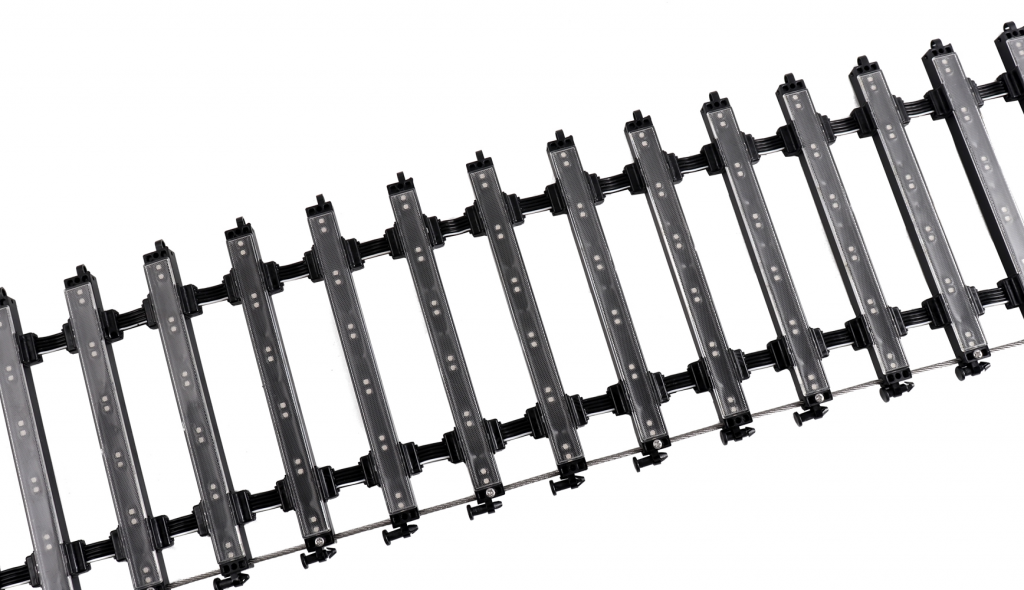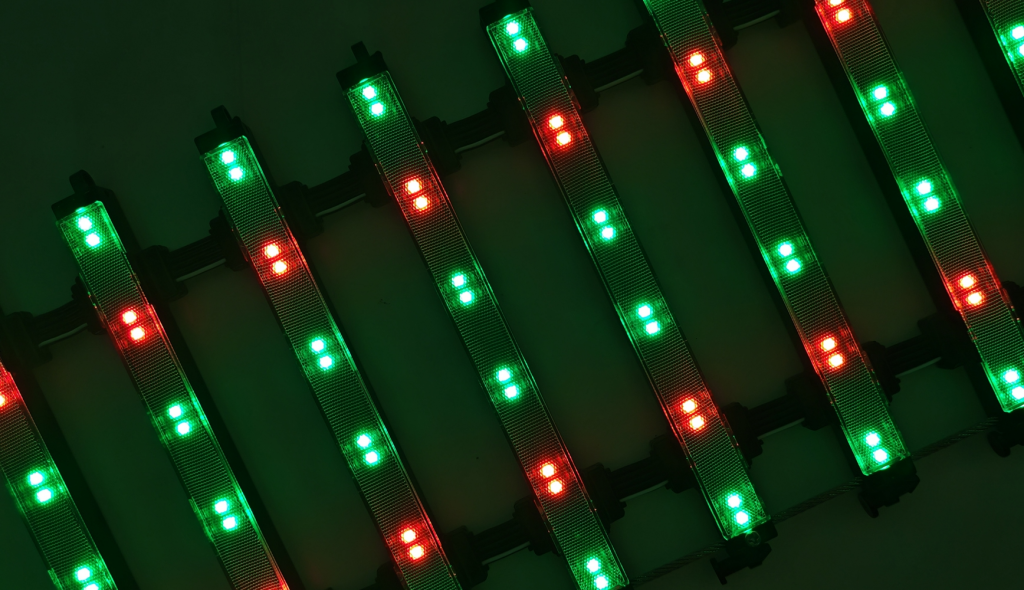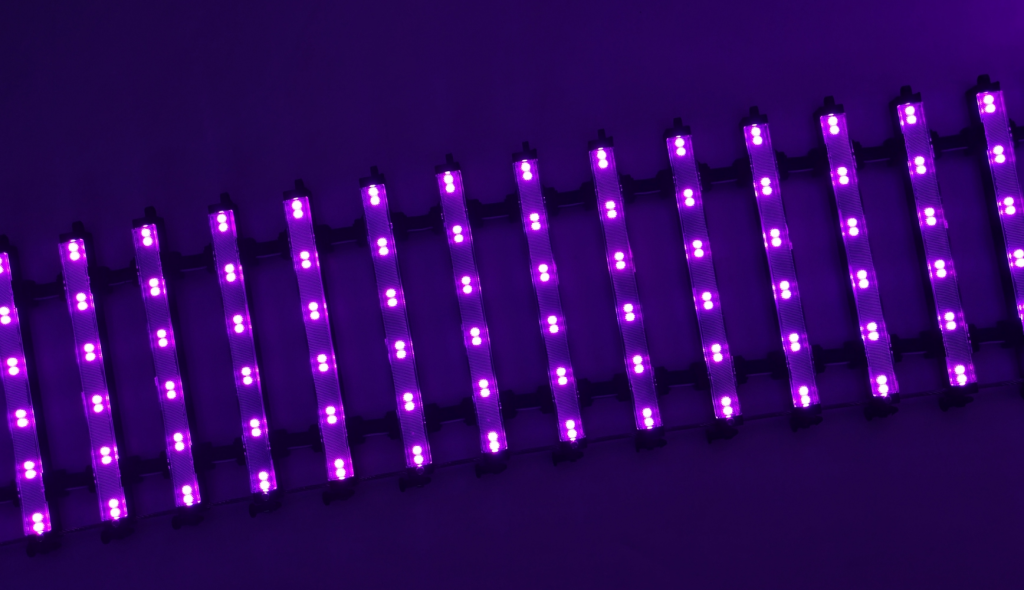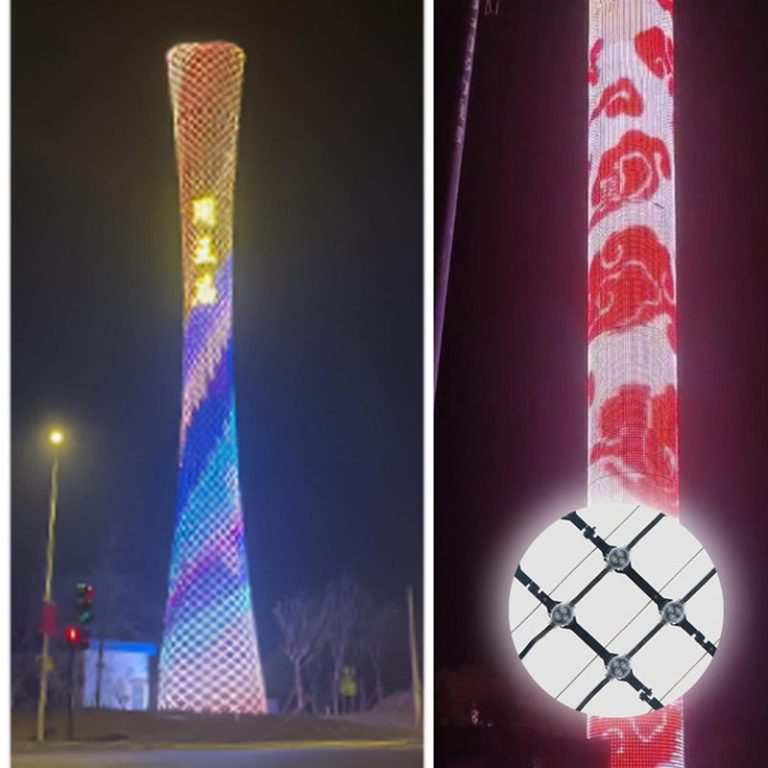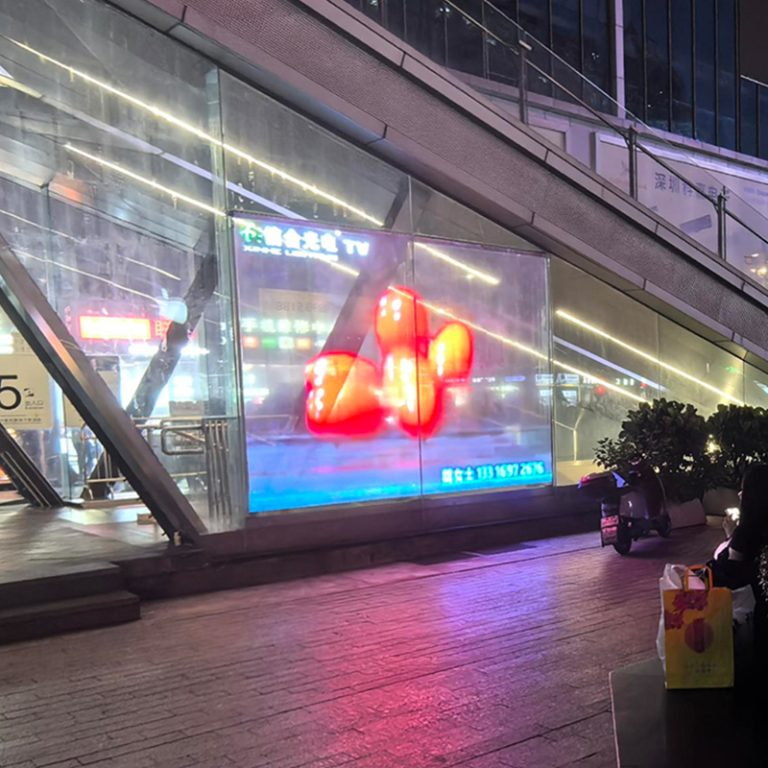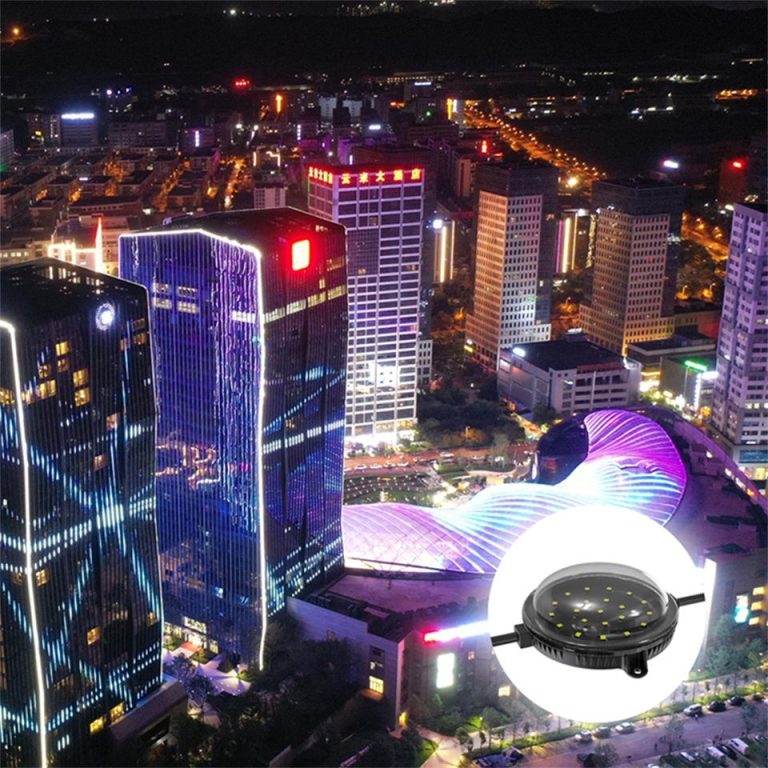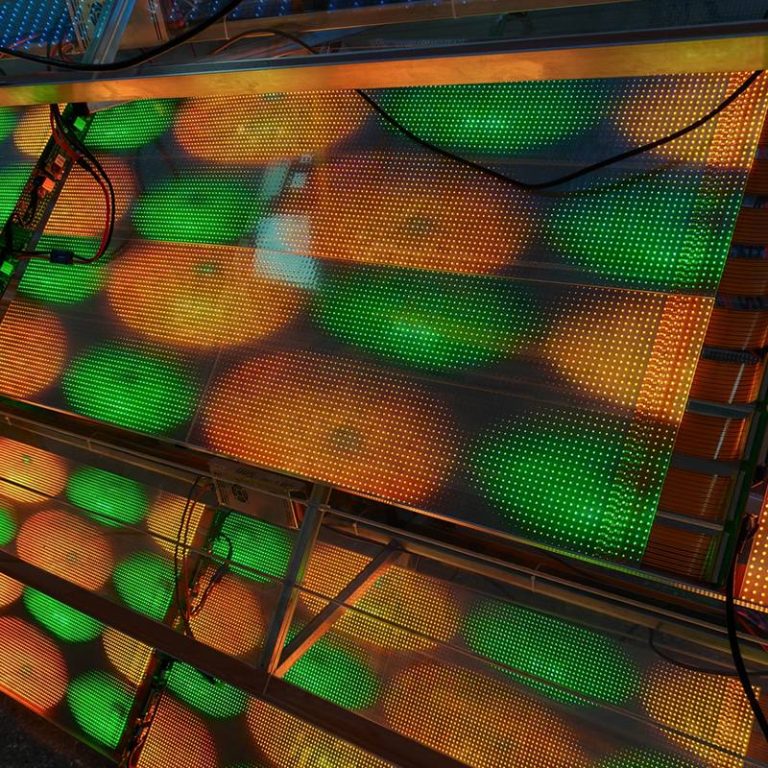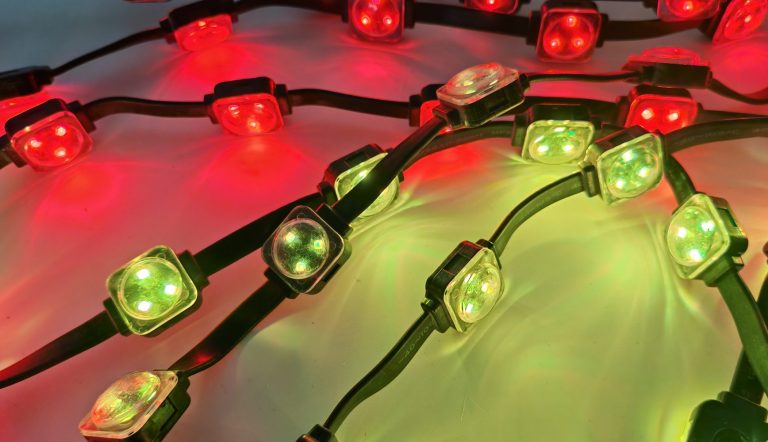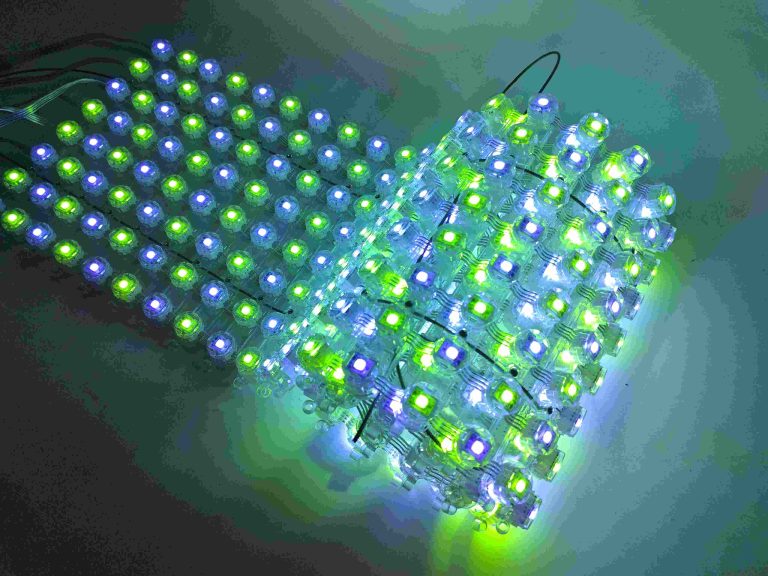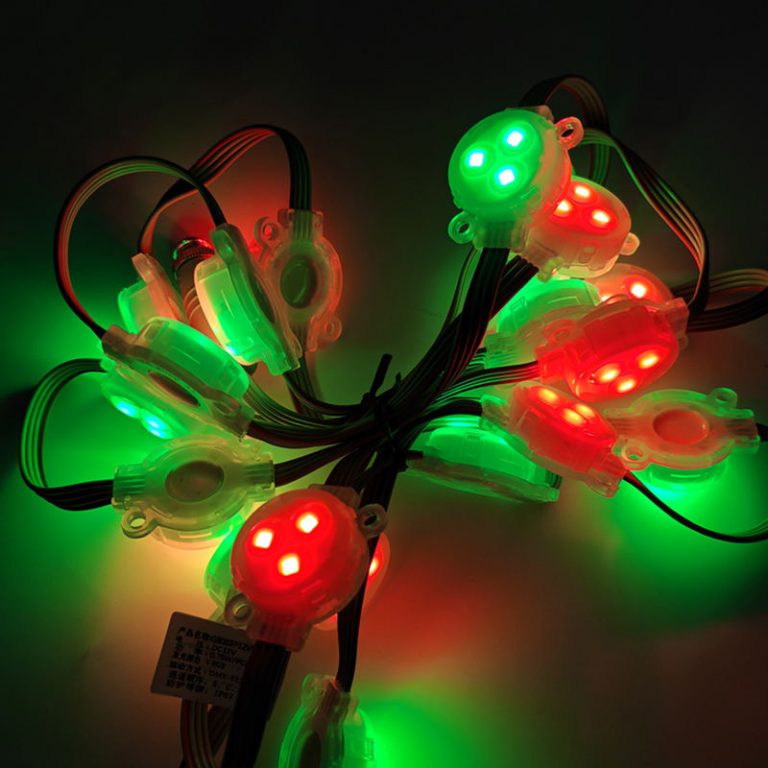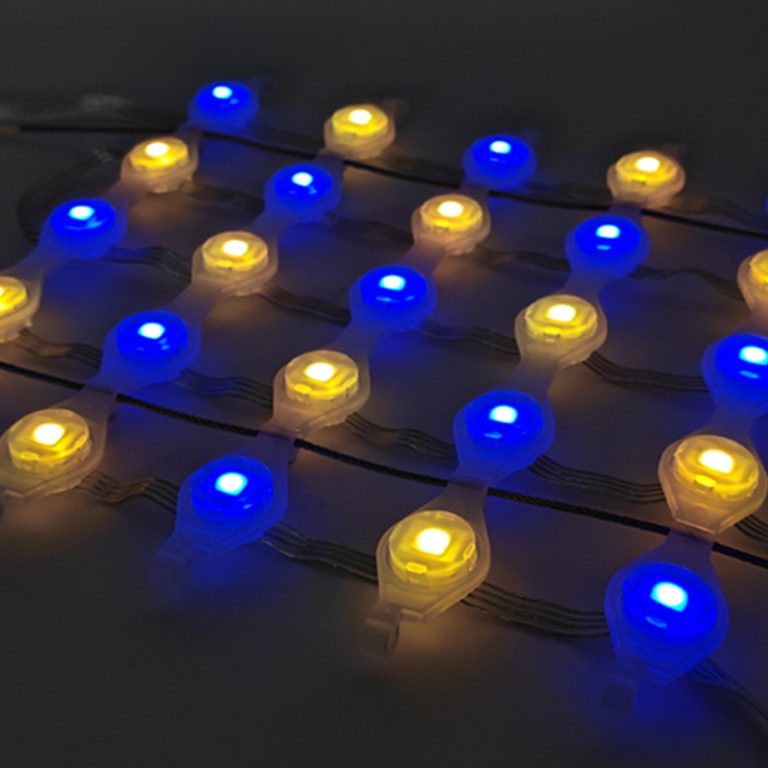The point light source LED grid screen is composed of a large number of individual LED chips, each of which is a point light source. These LED chips can be monochrome, full-color, or a combination of RGB (red, green, blue), with the ability to independently control brightness and color. LED grid screen is a professional display device that uses a matrix or array of point light source LEDs to display images, videos, or animations. They are commonly used in indoor and outdoor advertising, stage backgrounds, commercial displays, and large-scale events,
The origin of LED grid screen
The composition and material of LED grid screens can be traced back to the advancement of LED technology and the evolution of application requirements. LEDs (Light Emitting Diodes) were first introduced in the 1960s, primarily used for indicator lights and display screens. In the 1970s and 1980s, LED technology gradually matured and began to be widely used in digital displays and small screens, such as digital clocks, calculator displays, etc.
With the development of electronic technology and the improvement of LED brightness, people have begun to explore the use of LEDs for larger display screens to meet the needs of advertising, information display, and entertainment venues. In the early 1990s, LED began to be applied in outdoor billboards and large display screens, which are typically composed of larger LED modules, each module containing multiple LED chips. The rise of dot matrix LED display screens: In the early 2000s, with the further maturity of LED technology and the improvement of control technology, dot matrix LED display screens (i.e. LED grid screens) began to be widely used.
Components of the LED grid screen
LED Module: LED module is the basic unit of LED grid screen, usually composed of multiple LED chips, each LED chip is usually a combination of red, green, and blue (RGB), and there are also monochrome LED modules. The size of LED modules can vary, with common sizes ranging from a few centimeters to tens of centimeters, depending on the overall design of the screen and the requirements of the application scenario.
Driver Circuit Board: The driver circuit board is responsible for controlling the operation of the LED module, including the brightness, color, and display content of the LED. Each LED module is typically connected to one or more driver circuit boards, which are typically installed at the back or edge of the LED grid screen.
Control System: The control system is the brain of the entire LED grid screen, responsible for receiving signals from external sources such as computers, video processors, etc., and converting them into a format that can be understood by the driver circuit board to control the operation of the LED module. Control systems typically include signal processors, interface cards, power management, and other components.
Power Supply: The power supply of the LED grid screen is responsible for providing stable voltage and current to the LED module and driver circuit board. The power supply is usually selected based on the power requirements and environmental conditions of the LED grid screen to ensure that the LED screen can operate normally and maintain high energy consumption.


In summary, the composition of an LED grid screen mainly includes LED modules, driver circuit boards, control systems, outer frame structures, power supply, heat dissipation systems, and screen covering materials. Each component plays a key role in the overall structure, jointly ensuring the normal operation and display effect of the LED screen.
Installation Introduction of LED Grid Screen
Preparation work: Determine installation location: Choose a flat and stable wall or bracket as the installation location. Ensure that the wall can withstand the weight of the LED grid screen and the load of the installation bracket.
Measurement size: Based on the size of the LED grid screen, measure the installation position to ensure that the size and installation space meet the requirements.
Installation bracket: The installation bracket is the foundation for installing LED grid screens. Choose the appropriate bracket type based on the size and weight of the grid screen, usually including fixed brackets and adjustable brackets. Fix the bracket on the wall or floor, ensuring that the bracket is installed firmly, flat, and meets the installation requirements of the LED grid screen.
Connect power and signal: Connect the power and signal lines of the LED grid screen to the corresponding power and control systems. Ensure a stable connection and avoid any looseness or poor contact.
Install LED grid screen: After installation, test and debug the LED grid screen. Check the display effect, brightness, color uniformity, etc. of each LED module. Ensure that the connection between the LED grid screen and the control system is normal, and that the display content can be switched and adjusted through the control system. After completing testing and debugging, carry out final fixing and protective measures for the LED grid screen. Use appropriate screws or fasteners to secure each LED module, avoiding movement or damage caused by external forces or environmental factors. Consider installing a protective cover or shell to protect the LED grid screen from external objects or adverse weather conditions.
The above are the basic steps and precautions for installing LED grid screens. During the actual installation process, adjustments and operations should be made according to the specific situation and the model of the LED grid screen.
Application of LED Grid Screen
Due to its high brightness, wide viewing angle, and rich colors, LED grid screens have a wide range of applications in various situations, including but not limited to the following aspects
Advertising and Promotion: LED grid screens are commonly used for billboards in public places such as city squares, commercial centers, and large shopping malls. Its high brightness and dynamic effects can attract people’s attention and effectively enhance the dissemination effect of advertising content.
Stage Background: In performing arts events, concerts, stage plays, and other performances, LED grid screens serve as background decoration and video display tools, providing colorful visual effects and enhancing stage expression and atmosphere.
Exhibition display: In exhibitions, museums, and exhibition displays, LED grid screens serve as carriers for displaying information, showcasing works, and interactive content, which can attract the attention of audiences and enhance the attractiveness and interactivity of exhibitions.
Sports venues: LED grid screens are widely used in sports venues to display live matches, real-time scores, advertising sponsor information, etc., providing timely information and interactive experiences for audiences and participants.
Meetings and Events: In large-scale conferences, celebrations, and commercial events, LED grid screens are used to display speech content, event flow arrangements, participant information, etc., enhancing the organizational efficiency and participation experience of the event.
Traffic guidance: In public transportation hubs, stations, airports and other places, LED grid screens are used to display train number information, flight information, safety tips, etc., helping to manage and guide traffic flow.
Entertainment and Theme Parks: In entertainment venues, amusement parks, and theme parks, LED grid screens are used as part of amusement facilities to display game rules, interactive prompts, virtual experiences, and other content, increasing the entertainment experience for visitors.
Overall, LED grid screens, due to their flexibility and versatility, can provide powerful visual effects and information transmission functions in various scenarios, becoming an indispensable and important component of modern cities and activities.

